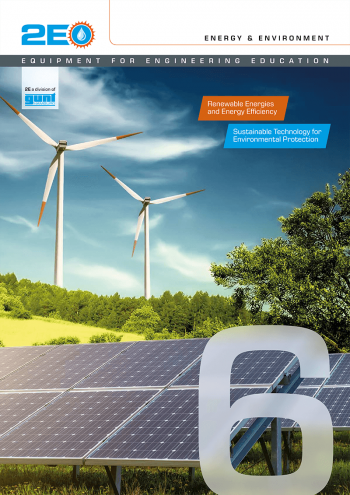[button type=”success” xclass=”pull-right” size=”lg” link=”http://www.gunt.de/download/Catalogue%206_english.pdf” target=”_blank”]Download Catalogue[/button]
Our 2E section is where we at GUNT meet the challenge of developing a sophisticated range of teaching and research systems for the energy and environment sectors.
The purpose of this catalogue is to provide you with as comprehensive as possible an overview of our innovative teaching and research systems from the energy and environment field.
The 2E Curriculum In the context of global climate change and increasing scarcity of resources, GUNT, with its 2E programme, is assuming responsibility for ensuring principles of sustainability are firmly embedded in engineering education.
The fields of energy and the environment are considered jointly in an integrated curriculum because they play a fundamental and key role in modern engineering.
Lectures and laboratory exercises from the fields of energy and the environment are already standard for a broad range of engineering disciplines, such as electrical engineering, mechanical engineering, plant manufacturing, power engineering, process engineering, environmental engineering and civil engineering.
The topics of these specialist fields have become an indispensable part of the teaching programme in vocational education and training for many technical professions

